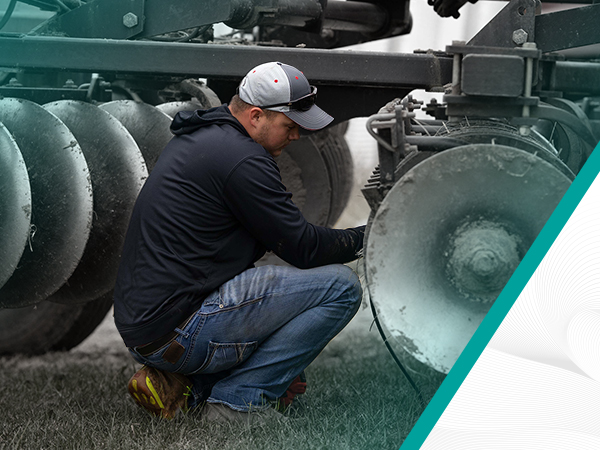Keep an Eye Out: New Trends in the AG Industry 2023 is rolling to an end, but industry advancements and changes remain …


Tractors have been a staple of America’s fields ever since motorized vehicles first made their
entrance into the agricultural sphere, with model variations and advances dating back from the early XIX
century. Whether you work with a vintage model or you are operating a more modern version, tractors
are and continue to be the most critical tool for any farmer. Avoiding technical malfunctions becomes
fundamental to ensure a longer useful life and more efficient daily operations.
There are three possible culprits for every breakage: the manufacturer, the user, and time. From
manufacturers, failure can occur due to faulty design, missing or damaged parts, and even from poorly
written instruction manuals. Users, on the other hand, are mostly associated with operational and care
mistakes caused by wrong maneuvers, over-exertion of the machine, and poor maintenance. Finally,
regardless of manufacturing period or technological advances, tractors suffer what most machines do:
time and use eventually affecting their functionality. Even after a long and productive period, models can
become obsolete, and parts are no longer available to replace faulty ones. Moreover, upkeep materials
have adapted to times and changed formulations, so they may no longer be compatible with your
equipment.
Knowing your tractor will eventually fail is something that could discourage you, but there is a
positive and important aspect that must not be overlooked: the average useful life for a tractor can go
between 10 to 20 years if tended properly and you can always choose to sell it before and renew it with
a better, more current model.
So, what failures can you expect? Here are a few common issues your tractor can have.
The heart of the machine, the fuel system can present issues that derive from either lack or
improper maintenance. If you notice your machine is emitting an odor, loses power, or releases smoke,
chances are there is a problem building up under the hood. Sometimes it can only take a little bit of extra
care, cleaning parts and changing the oil; other times, it requires a closer, more thorough inspection by a
professional who can identify leaks, fuel pressure problems, clogged filters and can also change and
replace parts that are beyond saving. Using the proper fuel, oils and lubricants can help you avoid many
headaches in this particular case; most fuel system-based malfunctions occur due to poor quality fluids
and/or using ones that are not appropriate for your machine. Fuel that has been mixed or diluted with
alcohol, ether, or some foreign agent can and will kill your engine; the same thing happens with fluids that
have been altered or that don’t cover the needs your vehicle has for its proper daily operation. One small
detail can result in a domino effect that will cascade and create even worse conditions.
Having trouble starting? Headlights dying? You may be having a problem with your electrical
system. Wiring is a common reason why your equipment won’t start, or your console is not lighting up as
it should; maybe some animal is chewing on your cables, or perhaps there is a problem with your
grounding wires. Battery failure, dead cells, open fuse-links, alternator, and low voltage can also impact
its overall functionality. You can try and troubleshoot by checking the wiring and battery power, but if
there is no solution in sight, even with your user manual at hand, it’s best if you have a trusted professional
eye inspecting the mechanism. Unless you know exactly the issue—and have the ability to manage it on
your own—it’s best if you take your equipment for an assessment before getting your hands dirty.
Not all problems are internal. Sometimes the vehicle itself works perfectly, but the external
components and main craft tools are the ones presenting issues. This is common especially for blades; a
dull blade will obviously not yield the same results as a sharp one and it can cause damage to the crop
and your production. Bent blades represent the same issue, even risking accumulating material and
causing clogs; having the wrong model installed will also negatively impact both your machine and your
field. Make sure that not only you are choosing the right piece of equipment according to your needs, but
also, if the piece is detachable or purchased as an extra add-in to your regular tractor, make sure to get it
properly installed and secured before start using it. Any additional tech—both hardware and software—
will also need your attention, so take note of any unusual glitches and malfunctions and report them to
your manufacturer to get assistance before you lose vital information.
No safety measure is too much. Tractors are your best tools, but they also pose risks for you as a
driver and user. Here at VISCOSITY, we got your back with what we know best, but the rest is up to you!
Find some alternatives on what we can offer in our Products section and contact us to learn more about
our solutions to keep working safely and in fluid motion.
RELATED ARTICLES
Harvesting Success: Crop Rotation and Cover Crops Crop rotation and the use of cover crops are key tools for sustainable farming practices …

